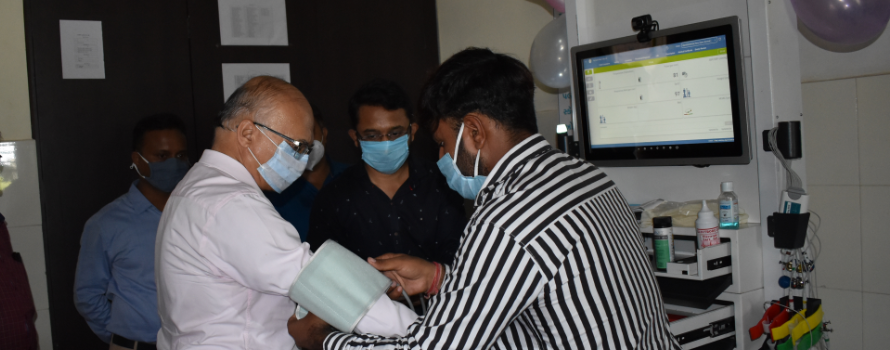Strengthening Primary Health Centers in Dwarka District with Point of Care – Health Kiosk

To provide better Point of Care facilities and to strengthen the remote peripheral health centers of the Dwarka District, HOPS Healthcare’s Health Kiosks were deployed at four centers as a part of Project Tushti. The aim of the project is to improve healthcare facilities, aid the medical staff at the center with quick, real-time Point of Care diagnostics facilities that include more than 12 hematology and Biochemistry tests, including quick check-up report and guidance from specialists, doctors through telemedicine video consultation feature available with the kiosks.
Business Challenges:
The public healthcare system in rural areas of Gujarat required upgradation and better point of care screening and diagnostic facilities for peripheral centers in Dwarka District. Medical staff at the center faced numerous challenges like increase in patient walk-ins, lack of digital testing equipment, and limited medical infrastructure. The peripheral centers required better Point of Care Testing equipment and better healthcare screening facilities to improve patient care.
Transformation:
Our Health Kiosks strengthened the Point of Care facilities at the health centers and equipped medical staff to provide quality primary healthcare services. It covers more than 12 pathology testing parameters that include hematology and biochemistry tests. It provides an instant health check-up report covering monitoring vitals summary including Blood Pressure, Blood Glucose, lipid profile, Blood Oxygen Saturation, temperature, height, weight, BMI (Body mass index) hemoglobin, 12 lead ECG pulse rate, and more. It also covers various health screening programs that include screening, diagnosis and testing for communicable and non-communicable diseases. Salient features of the Kiosks like biometric registration (fingerprint authentication), instant report, and video conferencing for specialists’ consultation enables medical staff to provide better primary healthcare services.
Impact Created:
The people at the bottom of the pyramid residing in rural areas where peripheral centers are the only source to access primary healthcare facilities are able to receive better healthcare facilities and services. They no longer need to travel to cities to get primary healthcare services. It saves them the time and money they would incur while traveling to cities. Health centers recorded an average of 15 plus video consultation and in just three months more than 3,000 patients have been registered and 5000 people have availed healthcare facilities at these four peripheral centers.

